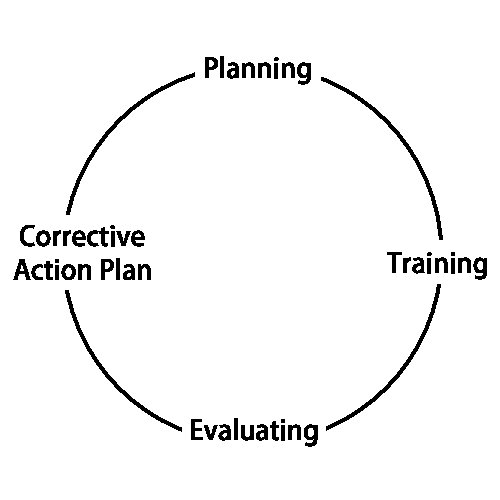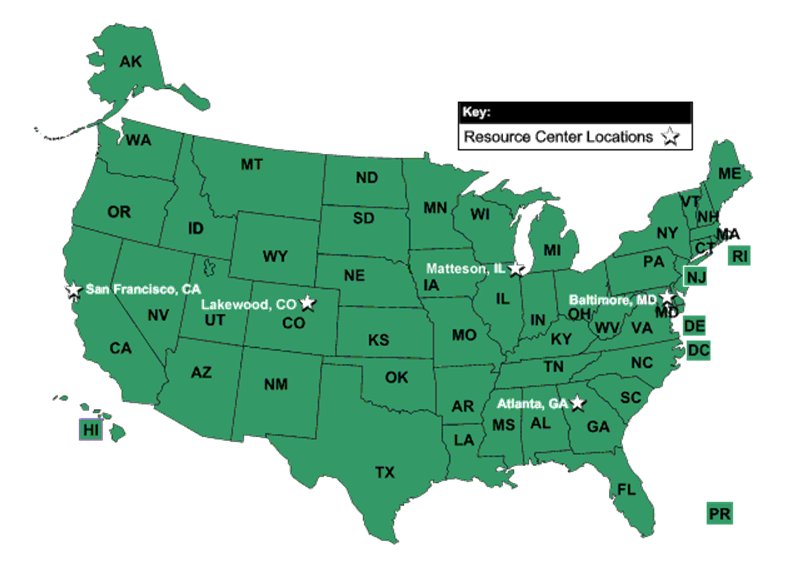 |
| NPHS 1510: Federal and International Framework |
| Continuity of Operations |
| |
| COOP Planning |
| |
Phases of Continuity
Continuity planning ensures the continuation or rapid resumption of essential functions during a continuity event. The continuity plan prepares agencies and their personnel for the possibility of relocating and being operational within 12 hours of continuity activation. Continuity plan implementation takes place in four phases:
- Phase I: Readiness and Preparedness
- Phase II: Activation and Relocation (0–12 hours)
- Phase III: Continuity Operations (12 hours–30 days or until resumption of normal operations)
- Phase IV: Reconstitution (recovery, mitigation, and termination)
|
| |
 |
COOP Plan Elements
- Identifying and prioritizing mission-essential functions
- Establishing how, when, and which authorities will be delegated
- Creating orders of succession
- Identifying and training appropriate staff to support essential functions
- Acquiring and equipping an alternate facility for relocation
- Defining availability and redundancy of interoperable communications and IT systems
- Identifying, protecting, and sustaining availability of vital records and databases
- Determining methods to transfer control to and from the primary site during and after an emergency
- Creating a viable schedule to update training, exercises, and plans
- Identification of Essential Functions
- Determine which functions performed by the agency must be continued under all circumstances
- Prioritize essential functions
- Establish staffing and resource requirements
- Identify mission critical data and systems
- Defer functions not essential to immediate agency needs
- Delegations of Authority
- Identify the programs and administrative authorities needed for effective operations
- Identify circumstances under which the authorities would be exercised
- Document the necessary authorities
- State the authority of designated successors
- Indicate circumstances under which delegated authorities would become effective and when they would terminate
- Ensure that officials are properly trained
- Specify responsibilities and authorities of individual agency representatives designated to participate as members of interagency emergency response teams
|
Orders of Succession
- Establish orders of succession to the Agency Head position, other key headquarters leadership positions, the regional director
- Identify limitations of authority
- Describe orders of succession by positions or titles
- Include in the vital records of the agency and revise as necessary
- Establish rules and procedures
- Include the conditions under which succession will take place, method of notification, and any temporal, geographical or organizational limitations
- Assign successors among emergency teams
- Conduct orientation programs to prepare successors
|
| |
| Definition: |
COOP Site (Continuity Facility or Alternate Site): A location, other than the primary facility, that can be used to carry out essential functions in a continuity situation.
Source: FEMA COOP Glossary. |
|
| |
Alternate Facilities
- Capable of supporting operations in a threat-free environment
- Should provide:
- Immediate capability to perform essential functions under various threat conditions
- Sufficient space and equipment to sustain the relocating organization
- Interoperable communications
- Reliable logistical support, services and infrastructure systems
- Ability to sustain operations for up to 30 days
- Consideration for the health, safety, and emotional well-being of employees
- Appropriate physical security and access controls
|
The COOP Site should be out of harm's way particularly with respect to natural disasters including:
- Hurricanes
- Lightning strikes
- Tornadoes
- Thunderstorms
- Tsunamis
- Earthquakes
- Wildfires
- Flood
- Winter Storms
Some online resources to help you gather natural hazards threat data:
- National Hurricane Center www.nhc.noaa.gov
- US Geological Survey Earthquake Hazards Program http://earthquake.usgs.gov/
- National Severe Storms Laboratory http://www.nssl.noaa.gov/
- National Weather Service http://www.weather.gov/
- The Weather Channel (TWC) http://www.weather.com/
- NOAA Tsunami Site http://www.tsunami.noaa.gov/
|
 |
Interoperable Communications
- Should provide:
- Capability adequate for the agency’s essential functions and activities
- Ability to communicate with COOP contingency staff, management and other organizational components
- Ability to communicate with other agencies and emergency personnel
- Access to other data and systems necessary to conduct essential activities and functions
|
Vital Records and Databases
- Plans should account of identification and protection of vital records, systems and data management software and equipment necessary to perform essential functions and activities
- Emergency Operating Records
- Vital records essential to the continued functioning or reconstitution of an organization during and after an emergency
- Legal and Financial Records
- Vital records critical to carrying out an organization’s essential legal and financial functions and activities and protecting the legal and financial rights of individuals directly affected by its activities
- Agencies should back up electronic files regularly
|
Tests, Training and Exercises
- All agencies should plan and conduct tests and training to demonstrate viability and interoperability of COOP plans
- Plans should provide for:
- Individual and team training (annually) of agency COOP contingency staffs and emergency personnel to ensure currency of knowledge
- Internal agency testing and exercising (annually) of COOP plans and procedures
- Testing of alert and notification procedures and systems for any type of emergency (quarterly)
- Refresher orientation for COOP contingency staff arriving at an alternate operating facility
- Joint agency exercising of COOP plans
|
Continuity Plan
- Executive Summary
- Part I Introduction
- Part II Planning Basis
- Part III Procedures for Plan Implementation
- Part IV Maintaining Continuity Readiness.
Continuity Planning Process
- Appointing the Continuity Program Manager.
- Selecting the planning team.
- Determining essential functions.
- Applying risk management principles to assess potential hazards.
- Identifying resources required for continuity planning.
- Establishing objectives and milestones.
- Determining procedures for information gathering and decisionmaking.
FCD 1 identifies 10 elements for a viable continuity plan:
- Essential Functions.
- Orders of Succession.
- Delegations of Authority.
- Continuity Facilities.
- Continuity Communications.
- Vital Records Management.
- Human Capital.
- Test, Training, and Exercise (TT&E).
- Devolution of Control and Direction.
- Reconstitution Operations.
|
| |
| Exercise Think about two different places visited regularly by tourists. What might be the issues related to |
|
|
| |
| Resources |
Three local organizations that are concerned with Continuity of Operations Planning are:
Student memberships and no cost attendance at events are available. |
|
| |
|
|
|
|
|
| Copyright © 2011 Ken Sochats |








